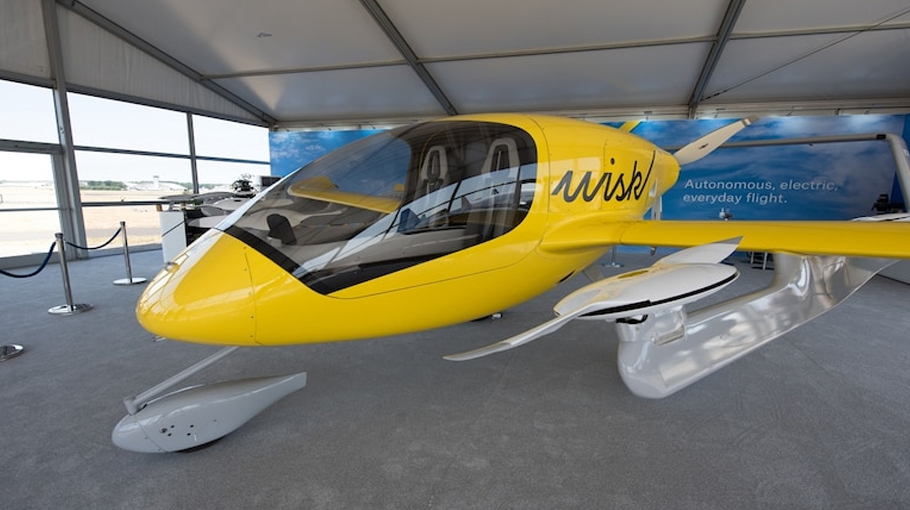The flying car failure is a lesson for us all

For a project so ambitious, the announcement about the end of flying-car startup Kitty Hawk Corp. was surprisingly terse. A single post on the company’s LinkedIn page on Wednesday stated: “We have made the decision to wind down Kittyhawk. We’re still working on the details of what’s next.”
The news was greeted with surprise by rival companies. Founded in 2010, Kittyhawk figured out early that it needed to make an aircraft as nimble as a car, rather than bolt some wings on an automobile. It helped pioneer a new type of aircraft called eVTOL, or electric vertical takeoff and landing — essentially a cross between a drone and a light aircraft — and hopes ran high when the deep-pocketed Google co-founder Larry Page came on board.
The dream wasn’t to be. Details on what went wrong for Kittyhawk have not been made public, but there are at least three sobering lessons to glean from its closure.
Technology isn’t moving in the direction that we expect.
The billionaire tech investor Peter Thiel highlighted the banality of tech’s evolution when he said in 2013 that, “We wanted flying cars, and got 140 characters instead,” referring to the then-character limit for tweets.
In the 20th century, people viewed the future through the exciting lens of science fiction: robot housekeepers from the Jetsons; or glass-domed houses and “meal pills” from the 1950s comic strip, “Closer Than We Think;” or flying cars from Back To The Future II.
But predicting the path of technology is hard when our only reference point is the present, hence why Marty McFly used a fax machine in the film’s future world, and why Arthur Radebaugh’s 1950s comics featured items like paper and pens for writing “electronic Christmas cards.” Back then, the concept of digital information was impossible to fathom.
Digital, networked information ended up becoming the biggest technological leap forward for the 21st century, an invisible force that put small, addictive computers in everyone’s pockets and re-wrote the dynamics of democracy itself.
Digital, networked information ended up becoming
the biggest technological leap forward for the 21st century,
an invisible force that put small, addictive computers
in everyone’s pockets and re-wrote the dynamics of democracy itself
Trying to predict which technology will be as impactful next is still just as hard to fathom. It could be decentralized crypto networks that gives everyone a piece of web3, or a radically different kind of personal computing device, like smart contact lenses that project digital images onto our eyeballs. Silicon Valley thrives on chasing the bold ideas of eccentric entrepreneurs, but the fact is, the biggest ambitions are often too hard to make real.
Moonshots usually fail.
There’s a well-known trope among Google employees that’s deeply embedded in the company’s culture: Failure is good. The head of Alphabet Inc.’s X division, the company’s skunkworks R&D lab for churning out radical technological ideas, said in 2016 that the unit had killed about 100 projects in one year and celebrated “fast failing.”
sWhen a team ended a project, they’d get applause from their peers, X’s Chief Executive Officer Astro Teller said. “Hugs and high fives from their manager,” he added. “They get promoted for it.” (They could also get away with it thanks to Google’s $200 billion ad machine.)
That is the natural process of turning a revolutionary idea into a blockbuster hit. But there have been few hits at X, and hyped-up projects like Google’s augmented reality glasses, smart contact lens for diabetics, or balloons that could beam Internet access to the developing world have been shut down. It’s easy to get lured by the thrill and promise of projects like flying cars — not least when breathless stock pickers insist their success is just around the corner — but they are called moonshots for a reason. When technology is hard to build, it’s much less likely to succeed.
Big-name backers don’t necessarily solve big engineering challenges.
Though it’s unclear what precisely went wrong at Kittyhawk, the company likely couldn’t solve some fundamental engineering puzzles. One of its models, for instance, suffered a series of fires because engineers had cut out the protective shielding used in lithium-ion battery cells for cars, and bundled the cells together with tape, according to a 2019 investigative report in Forbes, increasing the risk of the battery igniting.
Engineers who brought up safety concerns were also brushed off by management who were eager to bring the company’s aircraft to market, according to Forbes. Kitty Hawk declined to comment in the Forbes report.
Kitty Hawk had raised $75 million from investors including Page, according to Pitchbook, a market intelligence firm. But Page’s wealth and Google connections weren’t enough to keep the company alive. Neither was the cachet of being named after the North Carolina town where the Wright brothers’ held their first flying experiments.
But someone will make eVTOL’s a reality, most likely as a kind of flying taxi operated by an airline or ride-share firm. Boeing and Airbus are building them, as is Uber and a raft of smaller companies, who are just as likely to crack the puzzle.
As much as a billionaire backer inspires confidence, it doesn’t make a highly ambitious project any more feasible. Page’s Kitty Hawk project has made that all too clear.



